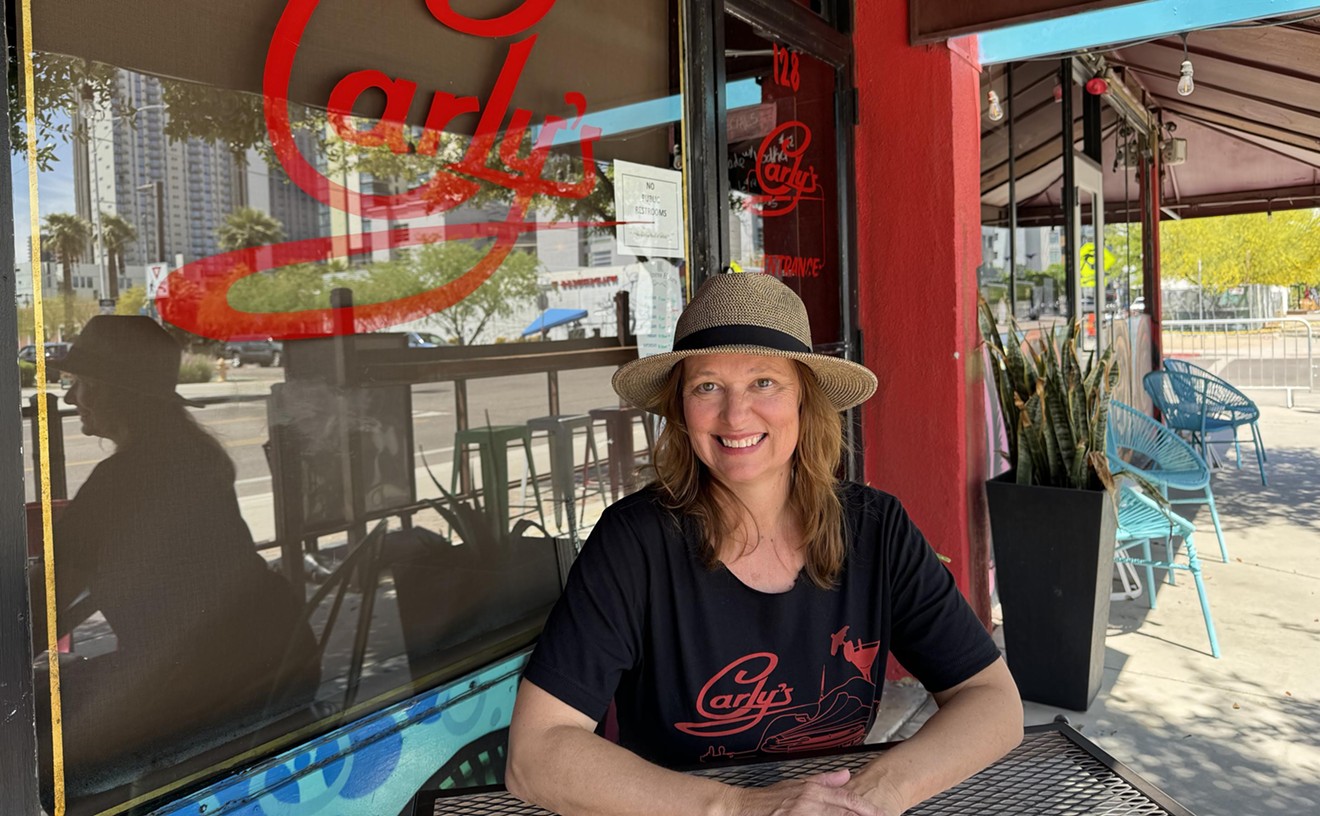As a food writer, I'm required to describe or categorize the food served at restaurants so that readers know what to expect and whether or not they want to go. Sounds easy enough, right? Especially since most of the time, chef-owners or their PR teams do the heavy lifting for me.
See also: Eliot Wexler Challenges Charleen Badman of FnB to Fried Chicken Throwdown at Noca Rusconi's American Kitchen a NIce Add for Paradise Valley Neighborhood
Italian food may be Northern or Southern (or Tuscan or even Florentine), Mexican may be Sonoran or Oaxacan or Mexico City-style, Chinese may be Szechuan or Cantonese or Hunan or any number of things, but the point is, these are all fairly clear-cut (and often regional) distinctions.
The difficulty lies in deciding just exactly what to call American cooking. Is it just one thing? And are we all on the same page when we talk about it?
A few weeks ago, I asked chef and co-owner Matt Carter -- who already operates Zinc Bistro and The Mission and recently opened The House -- to describe the food at his new place. His answer went something like this: "It's a little bit of everything. There's some Asian influence, some Southern influence, some French influence, which means it's American, right?"
While I agree that America is a melting pot of cuisines, and I agree that American chefs freely incorporate dishes, styles and techniques from other countries, I wouldn't necessarily call what they're cooking "American" because that would be misleading.
The way I see it, there's good old American-American cooking -- which means the straightforward (and often inexpensive) stuff we're famous for world-wide: burgers, hot dogs, chicken and dumplings, mac and cheese, fried chicken, meat loaf and chicken-fried steak, for example.
And then there's Modern American cooking (which costs more and looks prettier), the food that often blends classic (i.e., French) technique with indigenous American ingredients. Back in the 80's -- when chefs such as Larry Forgione, Jonathan Waxman, Alfred Portale, Judy Rodgers and Michael McCarty -- made American cooking both legitimate and exciting for the very first time, we called what they were doing "New American Cuisine."
It was a giddy time. Traditional American dishes such as corn pudding and apple pan dowdy were resurrected and re-invented, sometimes elevated by fancier ingredients. Meanwhile, a handful of regional American dishes, particularly those from the Cajun and Southwestern lexicon, became so popular they were everywhere, including fast food menus (I remember loathing blackened anything for a very long time).
So let's see: we have plain old American cooking, we have regional American cooking (and yes, there's sometimes overlap there) and then we have what I still think of in my head as "New American Cuisine."
According to the Oxford Companion for Food and Drink, the chefs who created New American Cuisine "applied Nouvelle Cuisine's central tenets of impeccable ingredients, creatively manipulated, to existing American culinary traditions."
Hmm, that sounds about right. But is that all there is to it? Wikipedia defines "New American Cuisine" as:
A term for upscale, contemporary cooking . . . combining flavors from America's melting pot with traditional techniques . . . featuring significant creative use of in-season produce and sauces . . . somewhat related to Nouvelle Cuisine . . . often incorporates influences from Latin American, Mediterranean and Asian cuisine.
That's getting closer, I think. Point is, when it comes to Modern American cooking, it's all up for grabs -- every ingredient, every dish and every technique from every place in the world. When Kevin Binkley (Binkley's, Cafe Bink) makes oxtail pupusas with leek crème fraiche and roasted bone marrow, we acknowledge the dish as a purely American invention -- even though it clearly reflects French and Latin American influences.
Now here's the kicker. Food writers and food nerds who speak about food seldom use the term "New American Cuisine" anymore. I'm not sure why. Maybe it seems too pretentious. Or maybe it seems dated -- stuck in the 80's and unrepresentative of the fluid progression from an exciting, nascent Then to an even more adventurous and confident Now.
In the early 2000's, when I was writing online reviews for Gayot, I remember receiving a memo that instructed all of us writers to stop using the term "New American" immediately. We were told it was out of fashion. At the time, I thought the mandate seemed pretentious. What were we supposed to call this food that couldn't be New American but certainly wasn't old American?
But Gayot was prescient. Somewhere along the line, food writers dropped "New American" and started saying "Modern American" or "Contemporary American" instead. However, these phrases still seem vague and unsatisfying to me. And honestly, aren't they just a way of saying "New American" without actually saying "New American"?
Sometimes, in the Zagat Survey, for example, (and full disclosure: I've been their local editor for 16 years), you'll see a writer use the word "eclectic," which seems a bit redundant, given that Modern/Contemporary/New American Cooking/Cuisine is by definition eclectic.
Fact is, none of us really knows what to call anything anymore. When a classically trained chef like Bryan Dooley of Bryan's Black Mountain Barbecue makes a sandwich using heirloom tomatoes, the sea salt he pecan-smoked in-house, fresh basil and upland cress, is he acting like a "New/Modern/Contemporary American" chef?
You bet he is, but his menu -- which runs to ribs, pulled pork, brisket, fries, cole slaw and potato salad -- feels more old school American than upscale American, so that's how he gets labeled most of the time. It's up to the writer to explain the subtle differences.
And so that's what happens. We food writers describe and categorize the food and menu as best we can. It's an American menu with Mediterranean influences, or Italian-inflected Modern American cooking or rustic this and sophisticated that. We use dozens of words to convey one thing, which, in many ways, is the same thing as the other guy's thing but just a little different.
But this is just me shouting into a canyon, and that's okay too because New or Modern or Contemporary American Cooking/Cuisine has never been more fun and I'm happy to describe it -- in 25 words or less.










